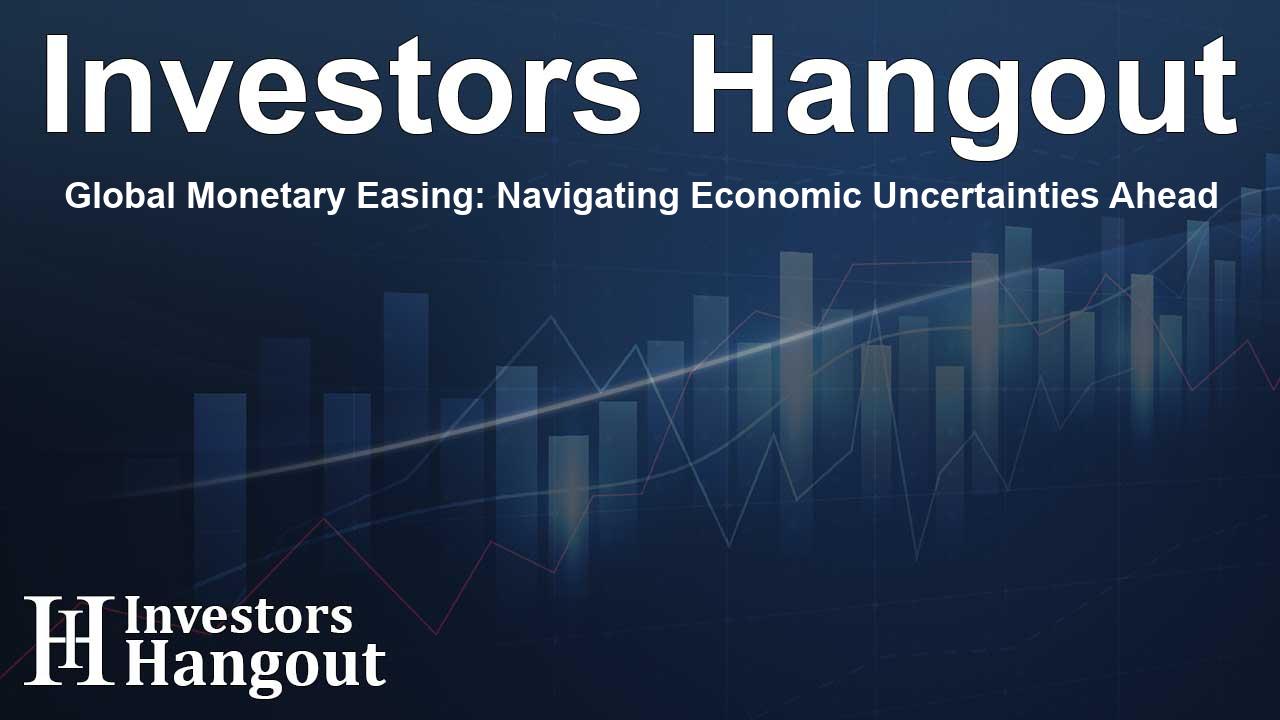Global Monetary Easing: Navigating Economic Uncertainties Ahead

Understanding the Current Economic Landscape
The European Central Bank (ECB) is meeting to discuss key issues impacting global markets and monetary policy. Many analysts expect that the ECB will implement a rate cut of 0.25%. This action reflects a broader trend of easing by central banks worldwide, including the Federal Reserve, all in an effort to encourage economic growth as different regions face signs of slowdown.
Since June, ECB President Christine Lagarde has been actively addressing concerning economic indicators within the euro zone. As the Federal Reserve looks to align its monetary policy with that of the ECB, there is a possibility of downward pressure on the U.S. dollar. This intricate balance of global monetary policy significantly affects financial markets.
Recently, the U.S. economy has shown signals of slower growth, while inflation rates show little signs of declining. This unique situation has resulted in unusual changes to Treasury yields, including a noteworthy trend where the yield on the 2-year Treasury fell below that of the 10-year Treasury. This development could indicate that the market has overly optimistic expectations regarding aggressive rate cuts from the Fed, despite ongoing inflation concerns.
Yield Curve: What It Tells Us
The Impact of Fed Rate Cuts
Conversations around the inverted yield curve frequently examine its potential implications for the economy, often viewing it as a warning sign of recession. However, many experts are still debating how reliable this indicator really is, especially with its prolonged inversion. Recent comments from Fed Chairman Jerome Powell highlight that these recession indicators are more statistical anomalies than fixed economic laws.
The shifts between 2-year and 10-year Treasury yields reflect vital economic factors at play. Present conditions suggest that elements like early signs of slowing growth, expectations of Fed rate cuts, and global investors seeking safety in the Treasury market are all contributors to this yield curve inversion. Grasping these dynamics is crucial for forecasting economic trends.
Historically, there have been times when periods of dis-inversion occurred without leading to recession. For instance, during the mid-1990s, the Fed made rate cuts amid stable inflation and strong labor participation, resulting in continued economic expansion and healthy consumer spending, despite international economic challenges.
Learning from History: A Cautionary Tale
Although the U.S. economy avoided recession in the mid-to-late 1990s, it’s essential to note that growth rates were significantly high, reaching 4.4% in 1997 and 4.8% in 1999. Domestically, the stock markets thrived, fueled by robust consumer confidence and spending. Meanwhile, foreign economies faced daunting obstacles, particularly during the Asian financial crisis that began in 1997 and spread through Eastern Europe and Latin America.
The Fed responded with additional rate cuts aimed at reducing the strain on American businesses and consumers caused by these international conflicts. During this turbulent time, vulnerabilities like excessive leverage in the hedge fund sector were exposed, exemplified by the collapse of Long-Term Capital Management (LTCM).
Looking Ahead: The Future Landscape
Recent analyses from LPL Research suggest that the current global uncertainty, combined with lower growth expectations, is likely to result in increased volatility in both bond and stock markets. This anticipated volatility has prompted the Strategic and Tactical Asset Allocation Committee (STAAC) to take a neutral approach towards equities, while remaining alert for potential buying opportunities should the market show signs of weakness.
In the months ahead, we expect more volatility, which could create ideal entry points for investors keen on embracing long-term bull market trends. Adapting to economic changes and seizing opportunities as they arise will be vital strategies moving forward.
Frequently Asked Questions
What is the significance of the ECB's rate cut?
The ECB's rate cut is important as it represents a collective effort to boost global economic growth, potentially impacting financial markets and investor behavior.
How does the inversion of the yield curve indicate a recession?
An inverted yield curve typically suggests that investors anticipate a slowdown in economic growth, as shorter-term rates exceed longer-term rates.
What measures can the Fed take to affect the economy?
The Fed can lower interest rates to reduce borrowing costs and encourage economic activity, or raise rates to temper an overheated economy.
Why do global investors favor the Treasury market?
The Treasury market is viewed as a safe haven during times of uncertainty, offering a more stable choice compared to the often volatile international markets.
What should investors keep in mind during times of economic volatility?
During volatile economic periods, investors should prioritize risk management, be prepared to adjust their portfolios, and stay updated on economic indicators and global market conditions.
About The Author
Contact Caleb Price privately here. Or send an email with ATTN: Caleb Price as the subject to contact@investorshangout.com.
About Investors Hangout
Investors Hangout is a leading online stock forum for financial discussion and learning, offering a wide range of free tools and resources. It draws in traders of all levels, who exchange market knowledge, investigate trading tactics, and keep an eye on industry developments in real time. Featuring financial articles, stock message boards, quotes, charts, company profiles, and live news updates. Through cooperative learning and a wealth of informational resources, it helps users from novices creating their first portfolios to experts honing their techniques. Join Investors Hangout today: https://investorshangout.com/
The content of this article is based on factual, publicly available information and does not represent legal, financial, or investment advice. Investors Hangout does not offer financial advice, and the author is not a licensed financial advisor. Consult a qualified advisor before making any financial or investment decisions based on this article. This article should not be considered advice to purchase, sell, or hold any securities or other investments. If any of the material provided here is inaccurate, please contact us for corrections.
